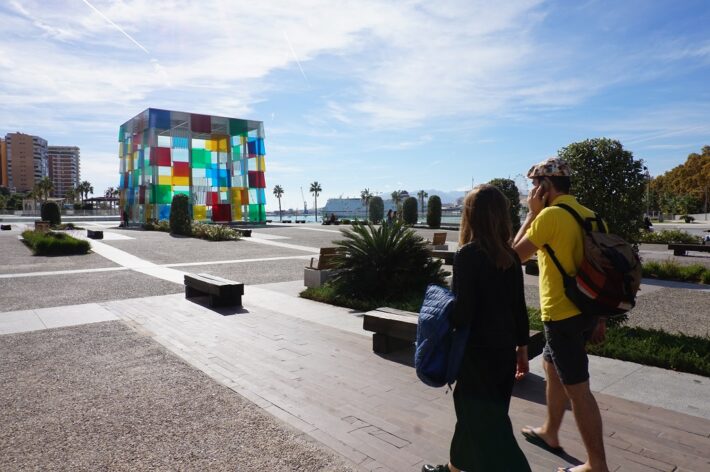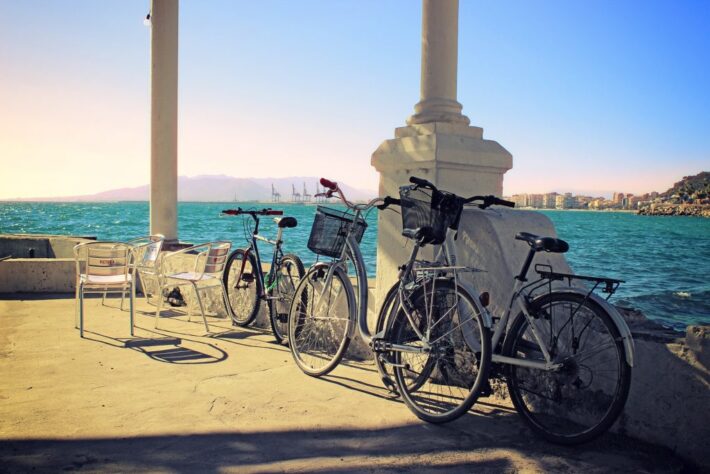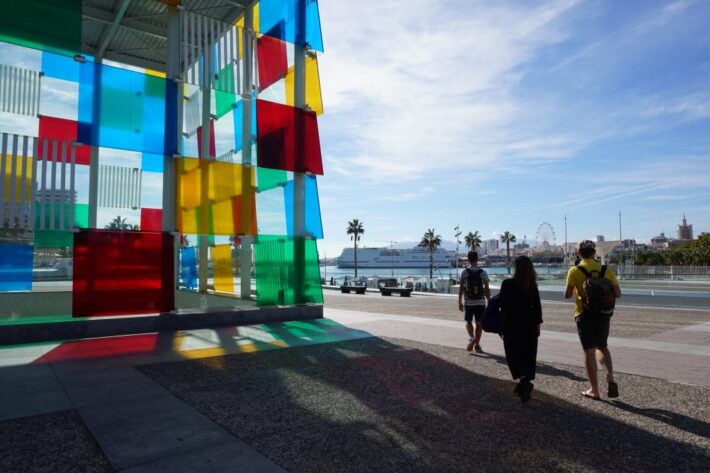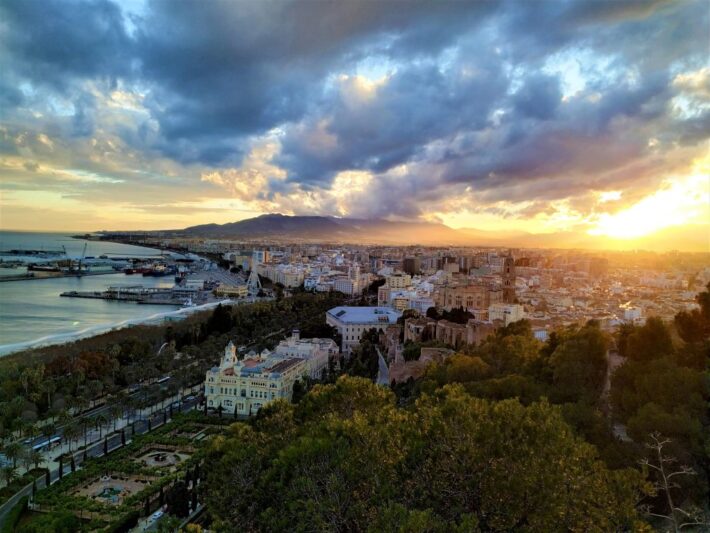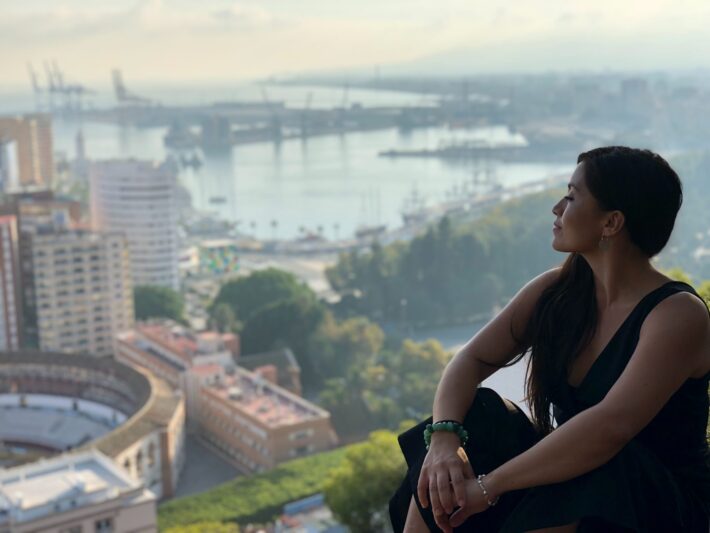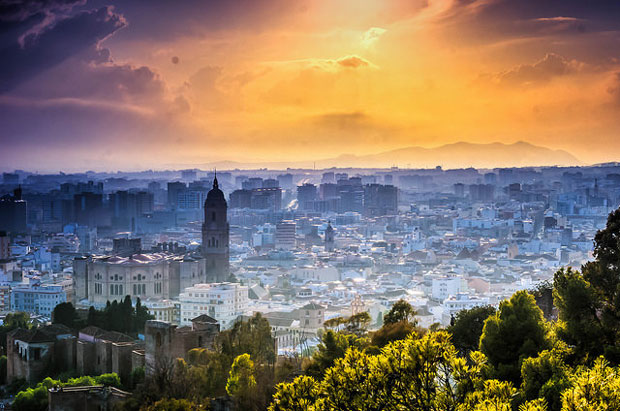Looking for what to do in Malaga in 2 days? Great! Then you are in right place! We are sharing with you here the perfect route to see the best of Malaga in only two days. Culture, gastronomy, parks, natural spaces, beaches, shops, holidays… although it’s difficult to summarize everything Malaga has to offer in a 2-day itinerary, here you will find different plans with the main things to do, see and great tips to make the most out of your stay in the capital of Costa del Sol:
Malaga in 2 days: what to do, see and eat on a weekend!
With more than 3000 years of history, Malaga is one of the most internationally renowned cultural destinations. We have created a self-guided tour of the city in which you will find what to do, the best things to see, and the restaurants you cannot miss. With the following 2 days in Malaga itinerary you will admire the monumental heritage that Phoenicians, Romans and Arabs have left us, discover the most relevant museums, try the exquisite and varied gastronomy in the bars or find a nice beach to relax. Let’s start!
DISCOUNTS AND RECOMMENDATIONS FOR YOUR TRIP
✈️ Find the cheapest flights, train or bus tickets here.
🛏️ Get up to 15% discount on your hotel by booking here.
🏛️ Book the best tours and activities here.
🚗 Compare and rent a car at the best price here or hire your transfer here.
📖 Get your Spain travel guide here.
💚 Book your travel insurance here.
Malaga in 2 days – Day 1: Old Town, museums and history!
We start our 2 days in Malaga tour at the emblematic Calle Larios, an important shopping area of Malaga with the most exclusive shops that is located next to Plaza de la Constitución: the heart of the city´s old quarter. From there we head west, along calle Compañía where we find the Palace of Villalón (16th century). Which is home to the Carmen Thyssen Museum Malaga, the first stop on our route.
1. Morning in Calle Larios, Carmen Thyssen Museum and a nice breakfast.
This museum was inaugurated in March 2011. Has a permanent collection of more than 200 works by 19th-century Spanish artists, centered especially around Andalusian painting and which makes up the most complete collection in Spain.
Here we find works by such great artists as Valeriano Domínguez-Becquer, Eugenio Lucas Velázquez, Julio Romero de Torres and Joaquín Sorolla, among others. In addition, the museum counts on a careful program of temporary exhibitions of undoubted artistic interest. It is definitely worth a visit.
Returning to plaza de la Constitución, we can take time out to have a rest and enjoy a good Malaga breakfast. Nice coffee with churros or a toasted sandwich will go down well.
But please note it is important to know how to order a coffee in Malaga, because depending on the amount of coffee served, each has a different name. For example, a “café mitad” is half coffee and half milk and a “sombra” is three quarters milk and one quarter coffee. Furthermore, more coffee than milk is a “largo” and there are up to nine different ways to order a coffee. But there is no need to worry, the friendly waiters will help us to learn this typical custom of Malaga.
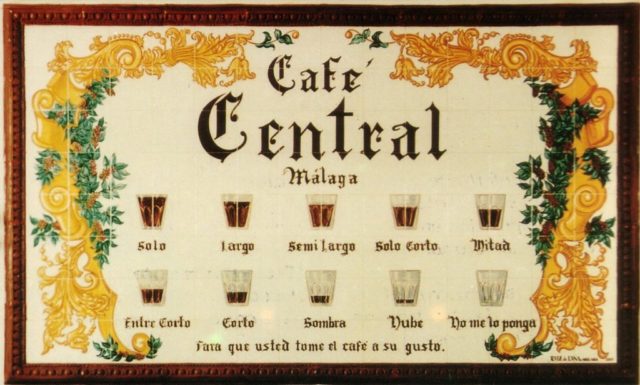
2. Malaga’s Cathedral and Episcopal Palace.
Following our “Malaga in 2 days” itinerary and heading east from Plaza de la Constitución we take calle Santa María, which brings us directly to the Cathedral and its Museum. Although work on the Cathedral started during the Gothic period (16th century) with the old mosque of the Arabian city, the current building is of Renaissance style and is still unfinished. Funds ran out in 1782 and so work was stopped, leaving the south tower unbuilt. This led to it being given the popular nickname of “The One-Armed Lady”. In front of the Cathedral are the plaza del Obispo and the Episcopal Palace (1762), which is a beautiful example of the baroque architecture of Malaga.
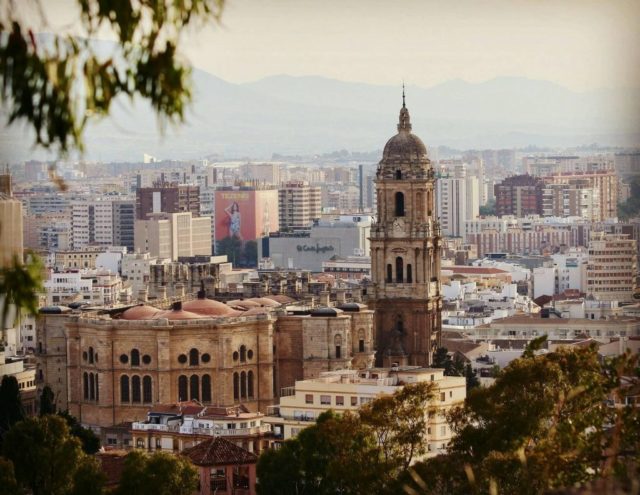
3. Visit the Roman Theatre and the Alcazaba
We go around the Cathedral along the last stretch of calle Santa María, where we can contemplate the majestic Elizabethan facade of the Sagrario (side chapel). Then we continue to calle Císter, and come out onto the Palacio de la Aduana (1826), the location of Malaga’s Museum that keeps the provincial collections of Archaeology and Fine Arts. In this amazing museum, we can find more than 15,000 archaeology pieces and more than 2,000 titles of Fine Arts, amongst them is one of the best collections of Spanish paintings from the XIX century.
Next to it, and at the entrance to calle Alcazabilla, we come across our next stop: The Alcazaba which, together with the Castle of Gibralfaro and the Roman Theatre, form the city´s most important archeological collection.
The Alcazaba, built between the 11th and 14th centuries, was the palace-fortress of the Muslim governers. It is built upon the remains of an older Phoenician fortress on the side of the mount of Gibralfaro, in a privileged position above the city. The grounds house an interesting exhibition room where ceramic materials of 11th to 15th century Muslim Malaga are on display.
This palace is connected to the Castle of Gibralfaro by a steep mountain pathway. Public transport is available in order to offer easy access to the fortress. We shall visit it later on.
Malaga’s Roman Theatre, situated at the foot of the Alcazaba, was built in the 1st century B.C., it was in use until the 3rd century A.D. After its restoration, the Roman Theatre of Malaga is used once more as a scenic space.
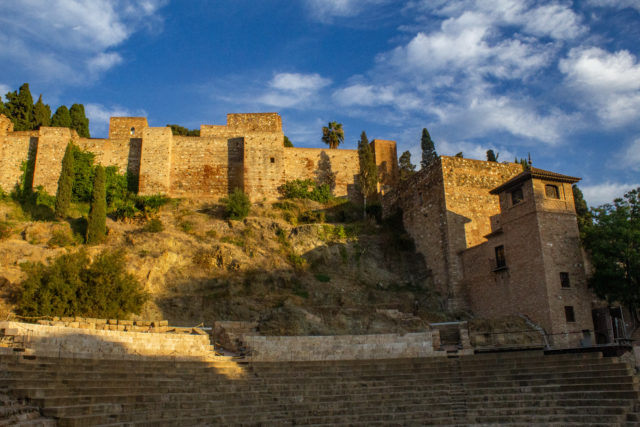
4. Lunchtime! Malaga’s wine, tapas and fish.
And now it´s time to take a break and try the varied, rich local and international cuisine in one of the many establishments which are to be found in the old quarter of Malaga. Fried fish, white garlic and almond soup, Malaga salad, potato and fish soup with vinegar…
And all accompanied by the delicious wines which Spain produces.
If you want to discover more about Malaga’s food culture, its wines and local’s favourite bars and taverns, join our Malaga Traditional Wine and Tapas Tour! You won’t regret!
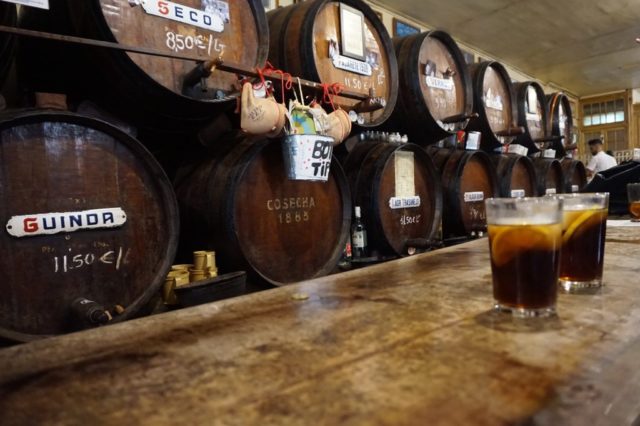
5. Picasso in Malaga? Impossible to miss!
We continue along our Malaga in 2 days route filled with things to do and see through calle Alcazabilla, reaching plaza de la Merced. There we find the Picasso statue right in front of the Picasso Foundation. Birthplace Museum. And the Picasso tour starts! The collection is located inside a 19th-century building, where the artist was born and lived for the first few years of his life. Many original works of Pablo Ruíz Picasso are on display, both in the permanent collection and also on loan. We can also find ceramics, engravings, illustrated books and personal possessions of the painter and his family.
From plaza de la Merced, we walk onto calle Granada, at the entrance of which the church of Santiago is found and where Picasso was christened. Of a Moorish Gothic style, building was started in 1487 and it is one of the oldest in the city. Its architectural beauty is enhanced by its artistic richness and value befitting the home of some of the most important brotherhoods who take part in the processions of the Holy Week of Malaga.
At some 200 metres from the church, and on the left, we arrive at the narrow calle San Agustín where the Palace of Buenavista home of the Picasso Museum Malaga is found. This is a 16th-century Renaissance-style building, with Moorish artisan details and a lovely watchtower, which has been extended with other constructions to house the collections of the Picasso Museum Malaga.
Opened in 2003, the museum displays 233 works by the Malaga artist, including paintings, sketches, sculptures, engravings and ceramics, which form part of the permanent collection, along with interesting temporary exhibitions.
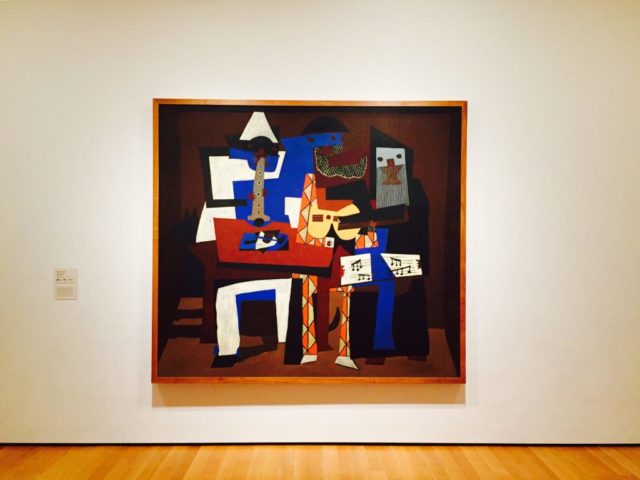
6. Malaga in 2 days itinerary: Sunset at Gibralfaro Castle
We take up our journey again and travel to our next stop: the Castle of Gibralfaro. On the way, we walk down calle Larios again, which will be bustling with people shopping. Something that, undoubtedly, we will have observed during our travels, and that we have taken advantage of to make a few purchases in some of the excellent shops found there.
Now in the Plaza de la Marina, we go to the start of the paseo del Parque and head East to the bus stop of the number 35 bus which will take us to the Castle of Gibralfaro. Abderramán III made a fortress from the existing ruins at the top of the mountain, among them those of a Phoenician lighthouse and that is why the Arabs called it “Yabal Faruh” (mount of the lighthouse).
Later on, in 1340, the Nazarí King Yusuf I, extended the grounds and built a castle. In the visitors center, located in the old powder keg of the fortress, there is an exhibition that displays elements of everyday military life in the castle, throughout its history.
Furthermore, we can enjoy the impressive views over the city and bay of Malaga, where we can see all the places which we have visited and those which we will visit next.
But if you really want to get the most of this hike and want to have a local tour that can tell you everything you need to know for your perfect holiday in Malaga, join our Malaga Highlights and Sunset Tour!
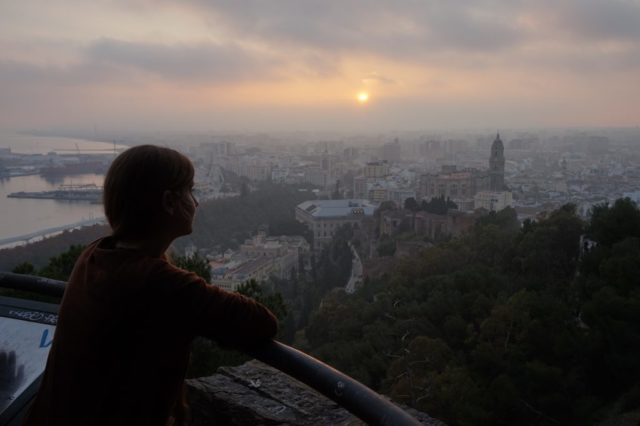
7. Malaga’s Bullfighting Ring (Plaza de Toros)
With that view in mind, we catch the bus which will take us back into town and where we get off at the bus stop in front of the plaza de Toros La Malagueta. From there you can also have a look inside the “Museo del Patrimonio Municipal” (The Municipal Heritage Museum), which exhibits the pieces of artistic and historical nature of the municipal heritage and has free entry.
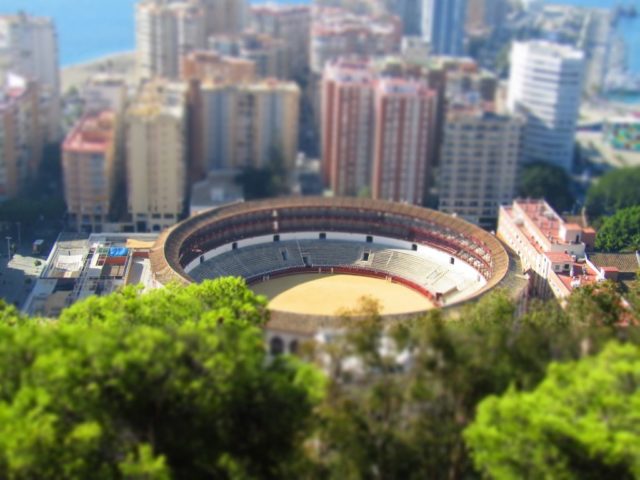
8. Time for some evening fun: Malaga’s New Port “Muelle 1”
Our next stopping point is found just in front of us. We cross the paseo del Parque and enter the paseo de la Farola (Lighthouse) which comes out onto the landmark which gives it its name: La Farola (1817), the symbol par excellence of the city of Malaga.
From the Lighthouse we can enjoy further spectacular views of the Port of Malaga and of the city, to whose old quarter we return by passing through Muelle 1, which contains a shopping and leisure center, where we can take advantage of the exclusive establishments to do a spot of shopping and take some drinks in the bars and restaurants next to the sea.
Between Muelles 1 y 2 we can visit the Centre Pompidou Málaga. It is the first international branch of the prestigious Parisian art gallery. It is located in the building known as El Cubo (The Cube) and it offers a permanent exhibition of a selection of the impressive collection of the Pompidou Centre in Paris, 20th and 21st centuries.This centre includes big names such as: Francis Bacon, Georg Baselitz, Constantin Brâncuși, Alexander Calder, Marc Chagall, Giorgio de Chirico, Tàpies, Picasso.
We continue on through Muelle 2, transformed into a boulevard named The Palm Grove of Surprises. A pleasant area to walk and relax which brings us back to the old quarter, where we can enjoy a night out in Malaga before returning to the hotel filled with unique experiences and eager to see more.
Malaga in 2 days – Day 2: Local traditions, food and relax
1. Plaza de la Merced and Teatro Cervantes
There’s still much to see in the city and much to learn about the life and customs of its citizens. Let´s make the most of the second day to explore traditional Malaga in-depth and visit some of its interesting museums.
This time we will set off from plaza de la Merced. Thats where Picasso was born, passing along calle Gómez Pallete before reaching the Teatro Cervantes, built in 1870 by Jerónimo Cuervo.Declared a National Artistic Historical Monument, the density and assortment of activities performed here sets it apart: symphonies, plays, comedies, operas, ballets, jazz, flamenco and rock concerts, musicals and all kinds of shows. It is also the showcase for the Spanish Film Festival in Malaga.
2. Atarazanas Market: fresh products from Malaga
We go back on ourselves, crossing the Plaza de Arriola to visit the Atarazanas market. So-called because it occupies the site which belonged to the Nazari atarazanas (shipyards), and where the original main door is still retained. It has always been said that if you want to know a city well, the first place to visit is its market. The beauty of the facilities and the contemplation of the magnificent products which we have seen in the market has awakened our appetite.
If you are a foodie, you cannot miss our Atarazanas market tour, where you will try the best local delicacies and discover Malaga’s rich gastronomy

3. Malaga in 2 days itinerary: Tapas and Wine in Calle Carreteria
Following the list of things to do in Malaga in two days, we now come out onto Calle Carretería. Here you will find the best local taverns in town, some of them still unknown to tourists. After some nice tapas and wine. If you are still curious about Malaga’s wine, you can continue your self-guided tour until you reach the Wine Museum of Malaga. There, you will learn all the secrets of this famous wine production and after having tasted the different varieties, you can even get some bottles of the one you liked the most!
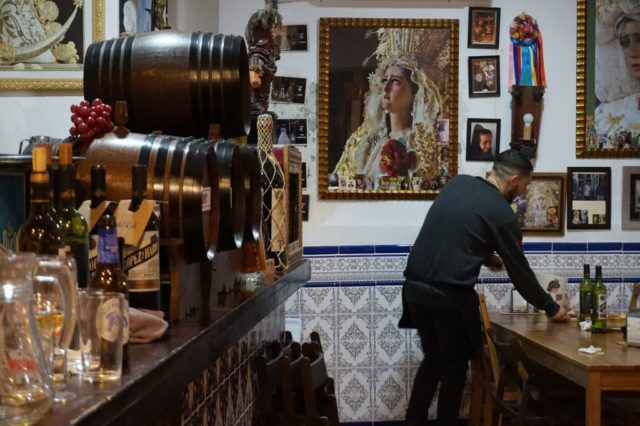
4. Pedregalejo: time to have a “espeto” (grilled sardines) and finally relax!
But if you are looking for a relaxing lunch break on the beach, then you can visit the Pedregalejo area. You can easily get to Paseo Marítimo de Pedregalejo by bike or by bus and, once there, enjoy the magnificent cuisine in one of the numerous chiringuitos (beach bars) in the neighborhood. A perfect end to our 2-day stay in this wonderful and luminous city of Malaga.
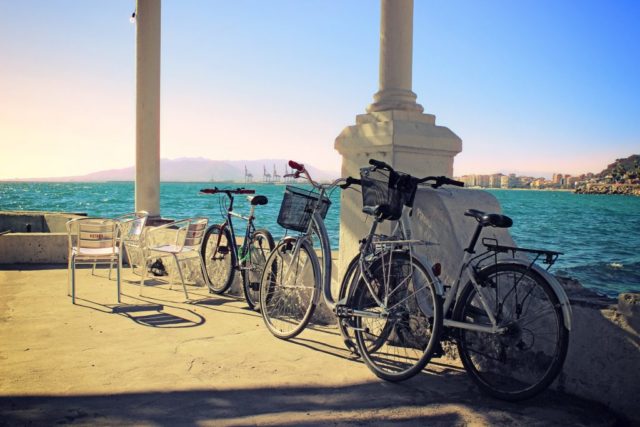
We hope you like the proposed itinerary for 2 days in Malaga, which is practically the one that Malaga’s Official Tourism Office recommends. If you have new ideas to add or just want to share how was your visit to Malaga, leave a comment!

